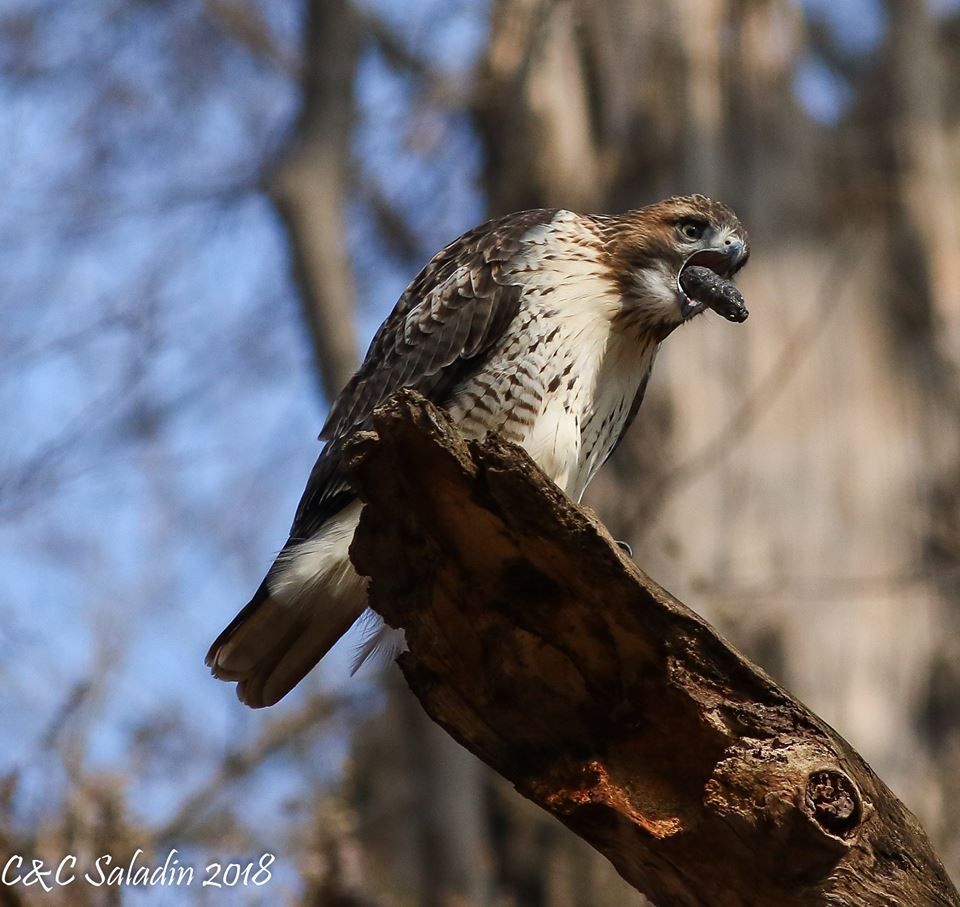
22 January 2023
This red-tailed hawk is not consuming the lump near his mouth. He’s casting a pellet of indigestible bones, fur and feathers that came up from his gizzard. Pellets are a normal by-product of digestion in birds of prey. If you find one, it can tell you what the bird was eating.
We always find pellets during annual maintenance at the Pitt peregrine nestbox including these three found during our 9 January visit (paperclip for scale). The pellets can be many months old.
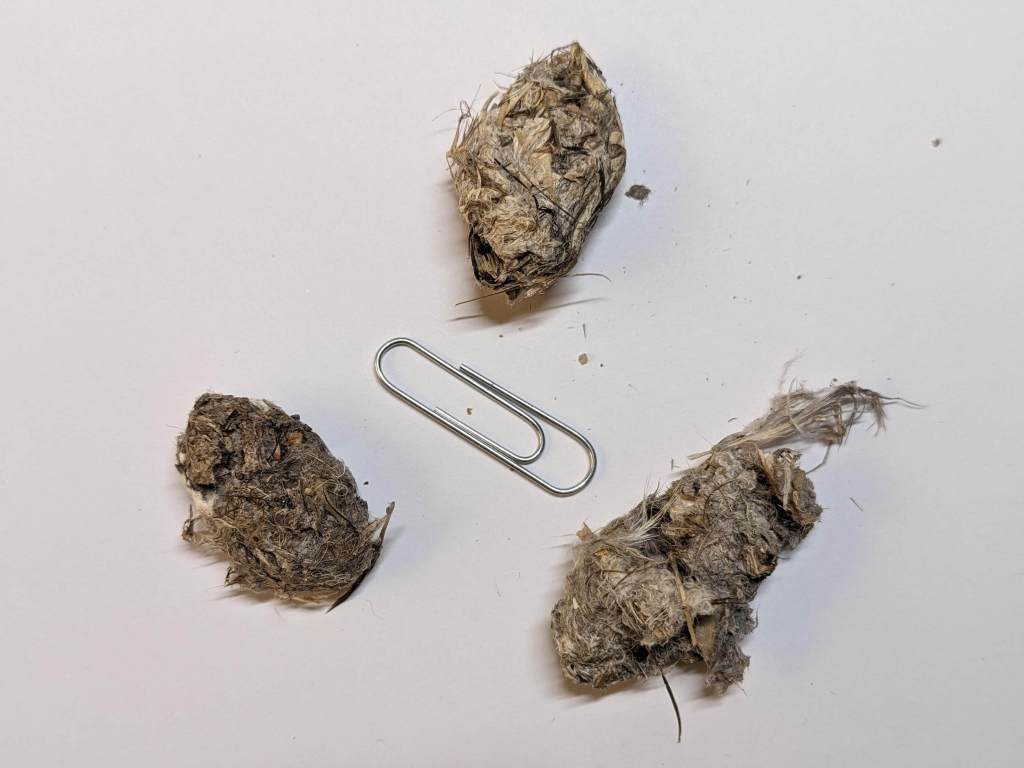
A closeup shows feathers and bones (no fur*) but is not very enlightening due to the pellet’s age. Fortunately I stored the pellets in a ziploc bag. After they thawed a small fly appeared inside the bag, hatched from eggs laid on the pellet in much warmer weather. Ewww!
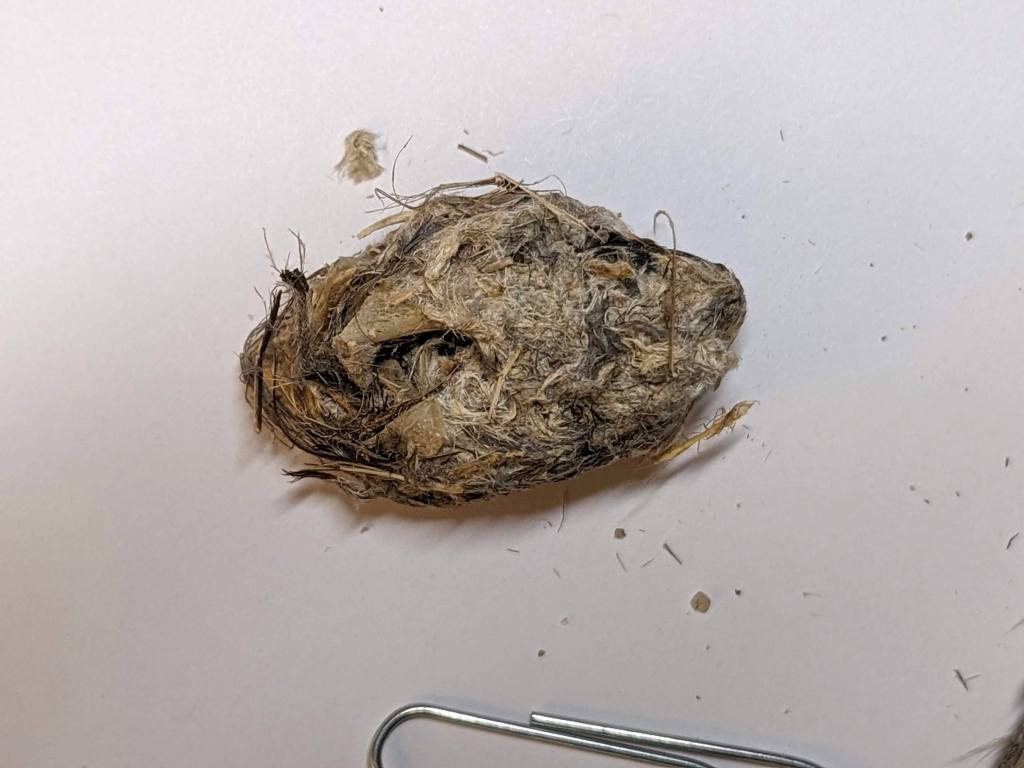
I imagine the pellets came from Morela since the green perch is one of her favorite places to rest and digest.
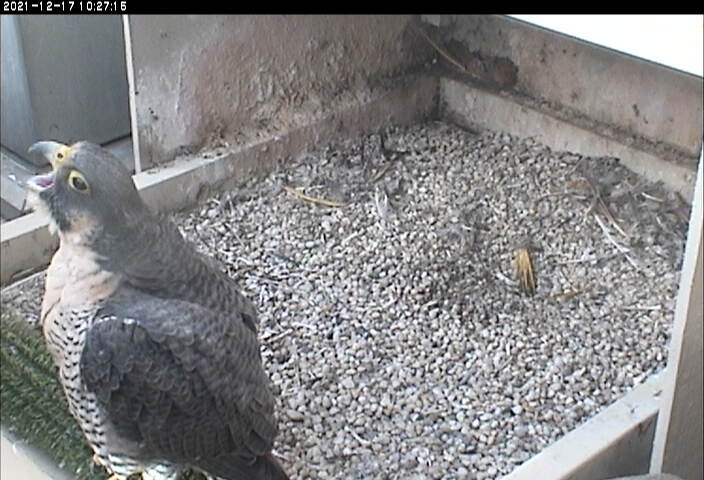
Peregrine pellets are slightly longer than a paperclip. Some birds make much larger pellets.
On a hike at Audubon Greenway Conservation Area last Wednesday we found a surprisingly large pellet containing fur, bones and a big tooth. It was so large that we wondered if a bird could produce it. I didn’t pick it up but it looked as though it could span my palm.
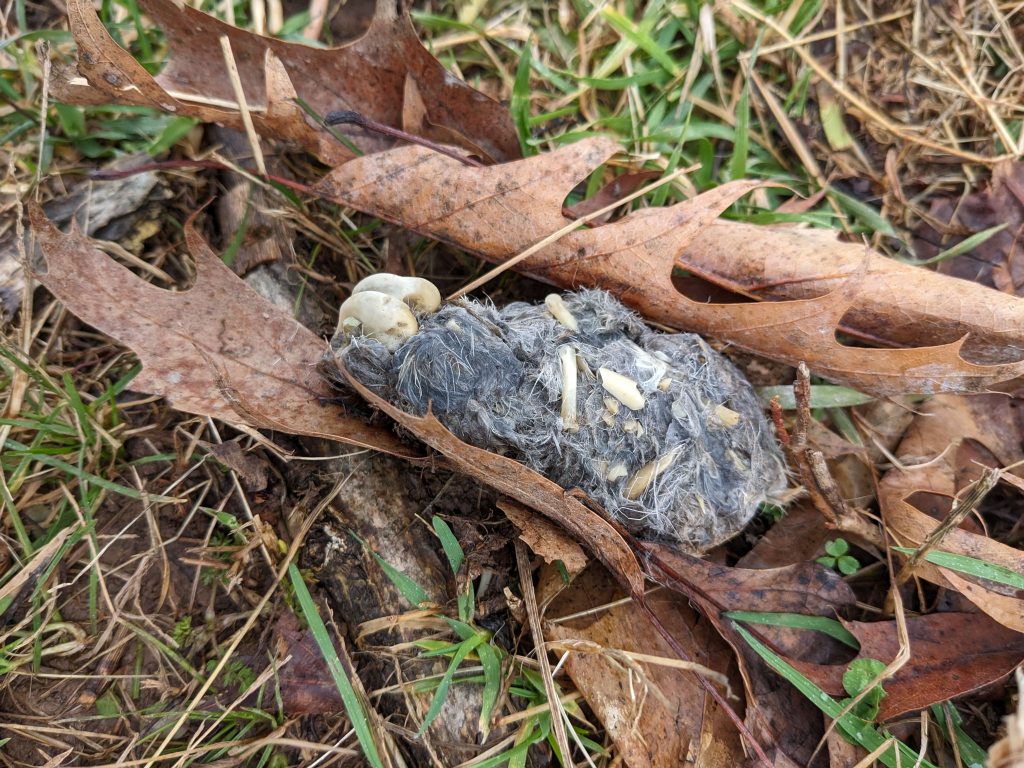
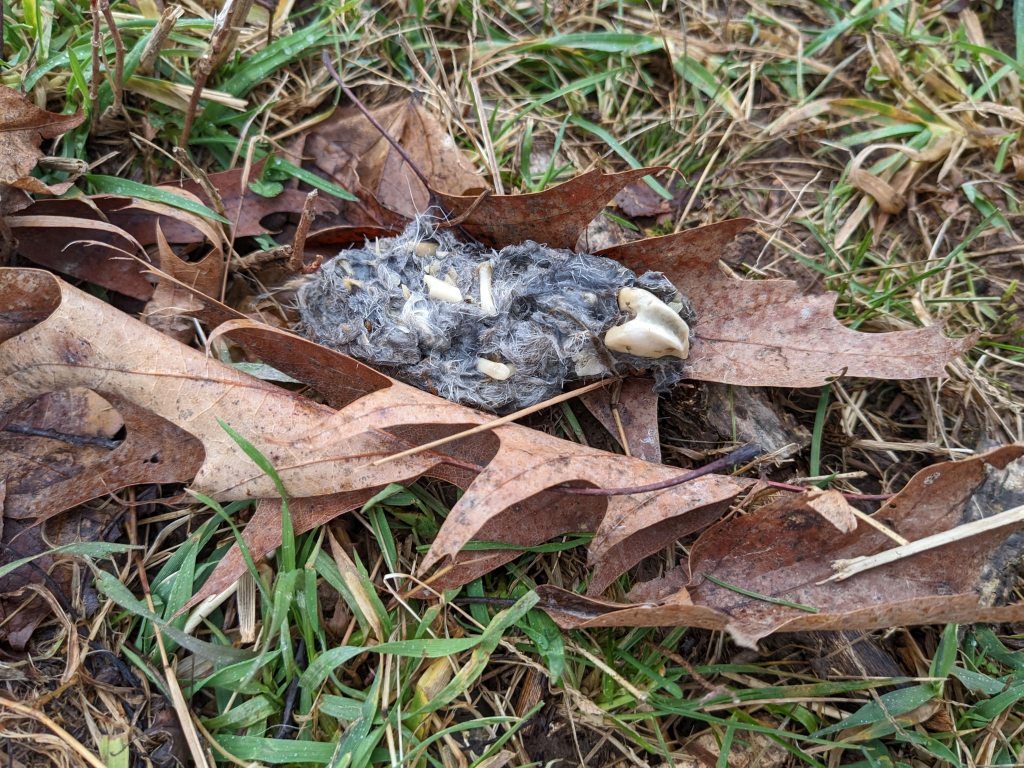
A Google search revealed that great horned owl pellets are 3 to 4 inches long, usually cylindrical and tightly compacted. This one may have opened up because it was soaked by heavy rain.
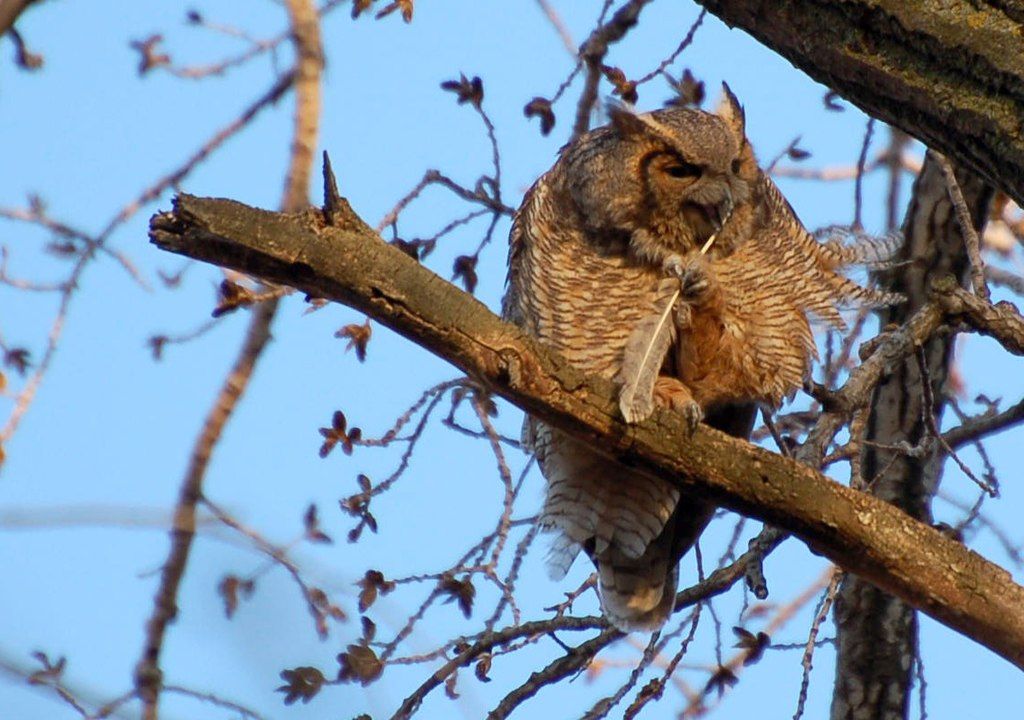
So what did the owl eat? Whose big tooth was that?
Learn more about owl pellets at The Owl Pages: Digestion in Owls.
* p.s. There is no fur in peregrine pellets because they don’t eat mammals, only birds.
(photos from Chad+Chris Saladin, Kate St. John, the National Aviary snapshot camera at Univ of Pittsburgh and Wikimedia Commons)